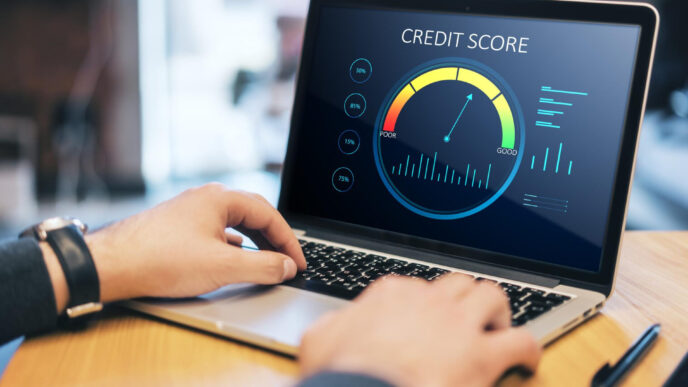The Path Begins with One Bold Decision
Why Zero Debt Is the Foundation of Financial Freedom
Imagine waking up with no bills, no loan payments, and no financial anxiety—just complete control over your income and future. That’s not a fantasy. It’s the result of a very real, achievable goal: zero debt financial freedom.
This guide isn’t just about numbers—it’s about mindset, lifestyle, and reclaiming your choices. Whether you’re buried in bills or just looking for a smarter way forward, taking that first step toward eliminating debt is the most empowering financial decision you can make.
Why does this matter? Because you can’t build a house on a shaky foundation. Debt robs you of opportunity, limits your freedom, and delays every future milestone—from starting a business to retiring early. The truth is:
“Debt is the shadow that follows every financial decision—until you decide to step into the light.”
Freedom Isn’t Earned—It’s Designed
The goal isn’t just to survive without debt. It’s to thrive with purpose and security. That’s where the concept of financial freedom comes in. While many chase vague ideas of wealth, those who achieve lasting peace with money know that the first real milestone is getting out of debt fast—and staying out.
In this guide, you’ll learn how to:
✔️ Wipe out your debt with smart, actionable strategies
✔️ Avoid common traps and keep your freedom intact
✔️ Build long-term wealth through intentional choices
✔️ Create a financial independence plan that aligns with your lifestyle
One Plan. Full Control. Lifelong Impact.
This isn’t just another article filled with generic tips. It’s your personalized roadmap—from overwhelmed to empowered. And it all starts with understanding the problem at its core: what debt really is, how it holds you back, and how to finally break free from it.
So let’s begin. The next section dives into the true impact of debt on your life and future, and why it’s absolutely worth eliminating—for good.
Understanding Debt and Its Impact
Different Types of Debt
Not all debt is created equal. Some forms of debt can be useful when managed wisely, while others can trap you in a cycle of financial struggle. Understanding the different types of debt helps you prioritize repayment and avoid future pitfalls.
1. Consumer Debt (Bad Debt)
This type of debt typically carries high interest rates and does not contribute to wealth-building. It includes:
✔️ Credit card debt – Often the most expensive form of debt, with interest rates ranging from 15% to 30%.
✔️ Personal loans – Usually unsecured loans with high interest rates.
✔️ Auto loans – While necessary for transportation, cars are depreciating assets that lose value over time.
✔️ Buy now, pay later (BNPL) programs – Easy to access but can lead to overspending and financial strain.
2. Student Loan Debt (Neutral Debt)
Student loans can be an investment in your future, but excessive borrowing can lead to financial hardship. Key considerations:
✔️ Federal vs. private loans – Federal loans often have better repayment options and lower interest rates.
✔️ Return on investment – Does your degree lead to a high-paying career?
✔️ Refinancing options – Lowering interest rates can save thousands over time.
3. Mortgage Debt (Potentially Good Debt)
A mortgage can be a smart financial decision if it allows you to build equity and avoid renting indefinitely. However:
✔️ Buying more house than you can afford can lead to financial instability.
✔️ A 15-year mortgage saves significantly more money in interest than a 30-year mortgage.
✔️ Paying extra toward the principal can shorten the repayment period and reduce interest costs.
4. Business Debt (Good Debt When Managed Wisely)
Borrowing to start or expand a business can be beneficial if it leads to greater income potential. However:
✔️ A clear business plan and strategy are crucial before taking on debt.
✔️ High-interest business loans can quickly become unmanageable.
✔️ Bootstrapping or seeking investors may be better alternatives.
How Debt Limits Financial Freedom
Debt impacts every aspect of life, from daily stress to long-term financial security. Here’s how debt holds you back:
✔️ Reduces Cash Flow – Monthly payments eat into your income, leaving less money for savings and investments.
✔️ Creates a Cycle of Dependence – Many people use debt to cover expenses, creating a never-ending cycle of borrowing.
✔️ Increases Stress and Anxiety – Studies show that financial stress is a leading cause of anxiety, depression, and even health issues.
✔️ Limits Life Choices – Want to travel, switch careers, or start a business? Debt can delay or prevent those dreams.
For example, someone with $500 in monthly debt payments is automatically $6,000 behind every year. Over a decade, that’s $60,000 lost, not counting interest!
The path to financial independence requires breaking free from this cycle. The next section will outline practical steps to eliminate debt and take control of your finances.

Steps to Achieve Zero Debt
Becoming debt-free doesn’t happen overnight, but with the right strategy, discipline, and mindset, you can eliminate debt and build a strong financial foundation. Here’s a step-by-step guide to achieving zero debt.
1. Assessing Your Current Financial Situation
Before you can tackle debt, you need to understand exactly where you stand. This means gathering all your financial information and evaluating your overall debt load.
Create a Debt Inventory
List all your outstanding debts, including:
✔️ The creditor or lender
✔️ The total balance owed
✔️ The interest rate
✔️ The minimum monthly payment
✔️ The remaining term (if applicable)
Here’s a simple table to organize your debts:
| Debt Type | Lender | Total Balance | Interest Rate | Monthly Payment | Remaining Term |
|---|---|---|---|---|---|
| Credit Card | Bank A | $5,000 | 22% | $150 | Ongoing |
| Auto Loan | Finance Co. | $12,000 | 7% | $300 | 3 years |
| Student Loan | Federal Loan | $20,000 | 4.5% | $250 | 10 years |
| Personal Loan | Bank B | $7,500 | 10% | $200 | 4 years |
Calculate Your Debt-to-Income Ratio (DTI)
Your DTI ratio helps determine how much of your income goes toward debt payments. To calculate:
(Total Monthly Debt Payments ÷ Monthly Gross Income) × 100 = DTI%
For example, if you have $1,000 in debt payments and earn $4,000 per month, your DTI is 25%. A lower DTI means more financial flexibility.
Understanding your financial reality is the first step toward creating an effective debt payoff plan.
2. Creating a Debt Repayment Plan
Now that you have a clear picture of your debt, it’s time to develop a strategy to pay it off efficiently. Two popular methods are:
The Snowball Method (Motivation-Driven Approach)
✔️ Pay off the smallest debt first while making minimum payments on others.
✔️ Once the smallest debt is cleared, roll that payment into the next smallest debt.
✔️ Continue this process, gaining momentum as you eliminate each debt.
✅ Best for: People who need quick motivation from small wins.
The Avalanche Method (Interest-Optimized Approach)
✔️ Focus on paying off the highest-interest debt first.
✔️ Make minimum payments on all other debts.
✔️ Once the highest-interest debt is gone, move to the next highest.
✅ Best for: People who want to save the most money on interest.
Both strategies work, so choose the one that keeps you motivated and committed.
3. Cutting Unnecessary Expenses
Debt repayment requires extra cash flow, and the easiest way to find it is by cutting non-essential spending.
Identify Your “Wants” vs. “Needs”
✔️ Needs: Rent/mortgage, groceries, insurance, utilities, transportation.
✔️ Wants: Dining out, subscriptions, luxury items, impulse purchases.
Practical Ways to Reduce Expenses:
✔️ Cancel unused subscriptions – Streaming services, gym memberships, etc.
✔️ Cook at home – Avoid expensive takeout and dining out.
✔️ Shop smarter – Buy in bulk, use discount codes, and compare prices.
✔️ Reduce impulse purchases – Implement a 24-hour rule before buying non-essentials.
Trimming expenses even by $200–$500 per month can significantly accelerate debt repayment.
4. Increasing Income Streams
While cutting expenses is helpful, increasing income is even more powerful. More income means faster debt payoff and greater financial security.
Ways to Boost Your Income:
✔️ Ask for a raise – If you’ve been performing well, negotiate a salary increase.
✔️ Start a side hustle – Freelancing, online tutoring, or selling digital products.
✔️ Monetize your skills – Use platforms like Fiverr, Upwork, or Etsy.
✔️ Sell unused items – Declutter and sell clothes, gadgets, and furniture online.
✔️ Invest in self-development – Learning high-income skills (coding, digital marketing, etc.) can lead to better job opportunities.
A combination of expense reduction and income growth creates a powerful formula for debt elimination.
5. Avoiding Future Debt Traps
Becoming debt-free is only half the battle; staying debt-free requires smart financial habits.
Key Strategies for Staying Debt-Free:
✔️ Use credit responsibly – Pay off balances in full each month.
✔️ Build an emergency fund – Aim for 3-6 months’ worth of living expenses.
✔️ Live below your means – Just because you can afford it doesn’t mean you should buy it.
✔️ Automate savings and investments – Pay yourself first before spending.
✔️ Stay financially educated – Read books, listen to podcasts, and follow financial experts.
By following these steps, you’ll eliminate debt, regain financial control, and move closer to long-term financial independence.
Building Wealth for Maximum Freedom
Becoming debt-free is a huge milestone, but financial independence is about more than just eliminating debt. True financial freedom comes from building wealth, securing multiple income streams, and making smart investment decisions. Let’s explore the key strategies to grow your wealth and maintain financial security.
1. The Importance of an Emergency Fund
One of the biggest risks to staying debt-free is unexpected expenses. Medical bills, car repairs, or job loss can force you back into debt if you’re unprepared. That’s why an emergency fund is crucial.
How Much Should You Save?
✔️ Beginner Goal: $1,000 – Covers minor emergencies and prevents reliance on credit cards.
✔️ Intermediate Goal: 3 months’ worth of expenses – Provides a buffer for temporary financial setbacks.
✔️ Advanced Goal: 6+ months’ worth – Ideal for long-term security, especially if you’re self-employed.
Where to Keep Your Emergency Fund?
✔️ High-yield savings account – Easily accessible and earns some interest.
✔️ Money market account – Offers higher returns while keeping funds liquid.
✔️ Separate from everyday accounts – Avoid the temptation to dip into it for non-emergencies.
Having an emergency fund ensures that life’s surprises don’t derail your financial progress.
2. Smart Investing Strategies
To achieve financial independence, you need to make your money work for you. Investing is the key to long-term wealth building.
Investment Options to Consider:
✔️ Stock Market (ETFs & Index Funds) – Low-cost, diversified investments that grow over time.
✔️ Retirement Accounts (401(k), IRA, Roth IRA) – Tax-advantaged accounts to secure your future.
✔️ Real Estate – Rental properties or REITs (Real Estate Investment Trusts) for passive income.
✔️ Dividend Stocks – Stocks that pay regular dividends, providing a steady income stream.
✔️ Bonds & Fixed-Income Investments – Lower-risk options for portfolio diversification.
Investment Principles to Follow:
✔️ Start early and stay consistent – The earlier you invest, the more you benefit from compound interest.
✔️ Diversify your portfolio – Don’t put all your money into one asset class.
✔️ Invest for the long term – Avoid emotional decisions and market timing.
✔️ Keep costs low – High fees can eat into your returns, so choose low-cost index funds.
Investing wisely accelerates your path to financial freedom by generating passive income and long-term wealth.
3. Passive Income for Long-Term Security
Financial independence isn’t just about saving; it’s about creating income streams that work for you. Passive income allows you to earn money with minimal ongoing effort.
Types of Passive Income:
✔️ Dividend investing – Stocks that pay out regular dividends.
✔️ Real estate rentals – Properties generating monthly rental income.
✔️ Digital products – Selling e-books, courses, or printables.
✔️ Affiliate marketing – Earning commissions by promoting products.
✔️ Peer-to-peer lending – Investing in loans for passive interest earnings.
By developing passive income, you reduce reliance on traditional employment and gain financial security.
4. The Role of Minimalism in Financial Freedom
Wealth-building isn’t just about making more money—it’s also about managing money wisely. Minimalism helps you focus on what truly matters, reducing wasteful spending and maximizing financial resources.
How Minimalism Supports Financial Independence:
✔️ Fewer unnecessary expenses – Reducing impulse purchases and consumer debt.
✔️ More intentional spending – Prioritizing experiences over material possessions.
✔️ Less financial stress – Simplifying life and avoiding lifestyle inflation.
Minimalism isn’t about deprivation—it’s about designing a life where money serves your values, not the other way around.
By implementing these strategies, you’ll not only stay debt-free but also build sustainable wealth that supports long-term financial freedom.
Next, we’ll explore mindset shifts that will help you maintain financial independence.
References and Inspirational Resources
- Ramsey, Dave. The Total Money Makeover: A Proven Plan for Financial Fitness. Thomas Nelson.
- Vicki Robin & Joe Dominguez. Your Money or Your Life: 9 Steps to Transforming Your Relationship with Money and Achieving Financial Independence. Penguin Books.
- Housel, Morgan. The Psychology of Money: Timeless Lessons on Wealth, Greed, and Happiness. Harriman House.
- Mr. Money Mustache – Blog on financial independence and frugal living.
- The Simple Dollar – Practical advice on debt reduction and budgeting.
- NerdWallet – Tools and articles on paying off debt, increasing savings, and building credit.
- U.S. Bureau of Labor Statistics – Data on income, expenses, and consumer financial behavior.















